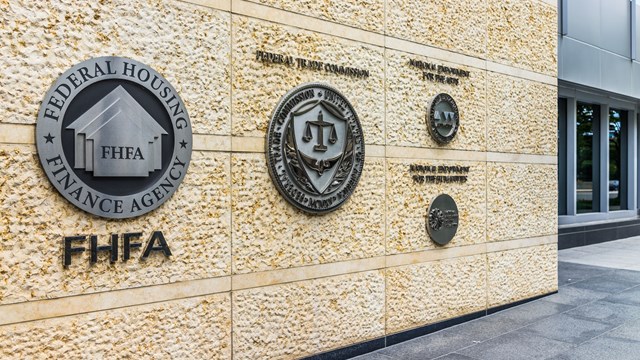Another year is behind us, and what a year it was! While 2017 and beyond promise to be eventful in myriad ways, it probably makes sense to focus solely on what’s ahead in the world of condominiums, cooperatives and homeowners’ associations for the moment. In effort to ascertain to what we can look forward, we reached out to various real estate professionals - from brokers to property managers to attorneys and more - in the greater Chicagoland area and asked them what they felt to be the definitive moments of the last year and change, how those moments will reverberate in the year ahead, and for what else associations should be looking out as they manage the day-to-day operations of their communities.
A Trip to the Market
The recession of the late aughts has never wandered far from our collective mind, and its effects are still being felt in a recovering real estate market, if less so now than it has in previous years. This, coupled with the fact of a new presidential administration in the White House may see some changes big and small in the near future.
“I wouldn’t say that we are in a ‘post-recession’ as much as we’re in a holding period,” says Matt Silver, partner at Urban Real Estate and president of the Chicago Association of REALTORS®. “The biggest challenges to the national and local economies are continued and robust job growth, favorable tax preferences and significant reform. Locally, property tax increases, city government and state deficits, and lack of budget will continue to have repercussions for the near future.”
Silver also does not see demand for urban residential real estate ebbing anytime soon. “There’s not a slowdown in sight, there,” he notes. “And people want to buy, as it’s still less expensive than renting. The amenities associated with city living, including public transit, parks and commercial and retail offerings, will continue to drive people to trade up or down while reeling in those who miss city life. That said, the suburbs offer amazing opportunities as well, and they seem to play off one another in concert. And it’s important to note that, while amenities are a strong driver in both the rental market and luxury real estate, the vast majority of buyers in the $200k-$600K range are more interested in lower monthly assessments.”
In regard to pricing and availability, Silver observes that “there’s an overwhelming interest among millennials to own a home of their own, spurred, no doubt, by ever-increasing rents. The housing market in the years to come will get a lift from these first-time buyers, so long as there’s enough new and existing supply at entry-level prices for them to engage with the market.”
“I also see a steady, stable increase in property values,” he adds. “Policy will have a slight impact on increase in pricing and rates. I also foresee a continued decline in inventory, as below-normal becomes the new business-as-usual. We’ll have to be strategic in our pricing as well as our bidding.
“Clients are also starting to demand more of a concierge service,” Silver continues. “There has never been a more important time to reinforce the value of professionalism in our industry. With big-data real estate aggregator sites like Zillow and Trulia, there is a wealth of information out there – much of it inaccurate. It’s important to distinguish between information and knowledge, and that’s where the realtor can come in in an advisory capacity.”
Finally, technology is improving rapidly, and buyers are aware of the latest trends therein. “They’re more interested in smarter homes,” says Silver. “Buyers want technology to make their homes and lives smarter, healthier and more intuitive. Brokers and developers are increasingly leveraging technology to give consumers real-time information about the homes in which they’re interested, as well as the surrounding neighborhoods. Geo-location and geo-targeting will continue to rise in importance, as will virtual reality and 3-D technology.”
Managing Expectations
As with realtors and brokers, property managers must be on the cutting edge of all things condo, co-op and HOA, as best to represent their clients in an ever-evolving landscape. Changes in law, policy or technology are often brought to the board by a responsible and aware manager, such that the board can make an informed decision on behalf of their association in fulfillment of its fiduciary duty.
“There are a few topics that our managers are discussing with increasing frequency that are poised to become major issues this year,” says Keith J. Hales, president of Hales Property Management in Chicago proper. “Airbnb is a hot-button one. We need to figure out how to put safeguards in place to stop it from happening in our buildings, and know how to respond when it does in fact occur. Also, there are new requirements in Chicago regarding bench-marking and recycling processes of which boards need to be aware. Other things that remain pertinent include how boards can best avoid issues that may lead to litigation, how to conduct snow removal in an efficient and practical way that keeps residents safe and reduces a board’s liability, how to fill board seats when volunteers are scarce, and emerging technology, including security systems, cameras, t-stats and text-based emergency communication.”
Rosemarie Wert, vice president and director of supervisors for Community Specialists – also located in Chicago - notes that, in addition to the aforementioned technological advances, boards are looking for more efficient ways to track day-to-day business, including inventory, staff activity and package delivery, in effort to monitor costs and make adjustments as necessary to meet the needs of their association and improve overall services. Recent technological advances have helped streamline these activities and allocate their maintenance to one or two centralized resources.
Legalize It
What is or is not permissible for a board to do is always somewhat in flux under the letter of the law, and 2017 will see several tweaks in regard to how associations can conduct business on both local and national levels.
As Wert points out, starting January 1, “it will be lawful for board members to engage in private/secret discussions on certain specified topics without providing notice to unit owners. These discussions may take place in person, by phone, by email or by other means and no longer have to take place during a closed-session portion of an open board meeting.” These matters consist of the following:
1. pending, probable or imminent litigation involving the association;
2. contracts with third parties;
3. appointment, employment, engagement or dismissal of an employee, independent contractor, agent or other provider of goods and services;
4. interviewing a potential employee, independent contractor, agent or other provider of goods and services;
5. violations of the association’s rules and regulations;
6. a unit owner’s unpaid common expenses; and
7. consulting with the association’s legal counsel.
After that date, these topics can be discussed lawfully in private during a closed-session portion of open board meetings. But boards must still hold open meetings to review all other matters, and board decisions still require an official vote by board members during a duly noted open meeting.
Marshall N. Dickler, Esq., a principal with Dickler, Kahn, Slowikowski & Zavell, Ltd., which has offices in Arlington Heights and Chicago, has this to add: “I think that we are going to see more requirements connected to safety, security, discrimination, disability and fiduciary duty going forward. I also think that there will be financial requirements imposed to try and put some financial controls on associations such that they properly reserve for both short- and long-term maintenance, repair and replacement. Case law is very confusing on this subject, and I can see legislators and corporate authorities forcing boards or their professionals to certify that the entity is financially sound in both dollars and policies. That may be imposed on attorneys, accountants and managers.”
Another positive change in Illinois, according to Scott A. Rosenlund, a shareholder with Fullett Rosenlund Anderson PC, which has locations in Lake Zurich and Chicago, relates to common element repair loans. “Effective January 1, Subsection 18.4 (m) of the Illinois Condominium Property Act will be amended to streamline the process for a condominium association to pledge collateral in a common element repair loan transaction,” Rosenlund explains. “This change will have the practical benefit of making it easier for many condominium associations to fund needed common element repairs and spread the cost of the repairs over time.”
“And on a national basis,” Rosenlund continues, “proposed updates to the Federal Housing Administration’s (FHA) regulations governing its condominium unit mortgage loan program have been introduced. These updates, if adopted, should make the FHA certification and re-certification procedures less cumbersome for those condominium associations that wish to expand the potential pool of unit purchasers through FHA approval.”
So yes, a new year comes in with the tides of change. And while none of these may seem to be revolutionary on their face, a board is best served by being aware of the incremental alterations that are happening in its orbit, lest it find itself caught asleep at the wheel when confronted with a decision that can best serve an association.
Mike Odenthal is a writer and reporter with The Chicagoland Cooperator.










Leave a Comment